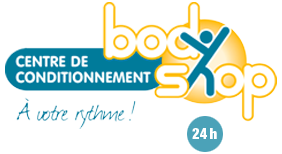Best Exercises For Lower Back Pain. Approximately 80% of the population will experience lower back pain at some point in their lives. Only the common cold beats it as the third most frequent reason for a doctor’s visit and the second-leading cause of missed work!
Back pain can be caused by a variety of factors, including sprains and strains on one end of the spectrum and herniated discs as well as fractures on the other. Less serious — and more common — culprits include poor posture, slouching while sitting at your desk, and carrying a heavy purse on one shoulder.
Fortunately, in many cases, surgery or pills are not the best medicine. It’s practice.
Contents
Best Exercises For Lower Back Pain
Although not every exercise style is effective, Pilates is one of them. Whether you enroll in a class as well as hit the mat at home, these low-impact routines can alleviate and prevent back pain. Pilates is an evidence-based rehabilitation method for treating low back pain that focuses on core strengthening.
Tips and Guides: Deep breathing combined with short, exact movements strengthens your profound abdominal and back muscles. Try these Best Exercises For Lower Back Pain moves for different parts of your core:
Swimmers

Lie on your stomach with your arms enlarged and your neck and head lifted off the floor. Lift the opposite leg and arm at the same time, hold for a moment, and then return to the starting position. Rep on the opposite side.
What they do: When you tilt, twist, as well as arch your back, you participate in your multifidus, a group of tiny muscles connected to the spinal column that help to stabilize the vertebrae. It is critical to keep them strong and limber, and research suggests that pilates is an appropriate method to do so.
How they assist your back: Moves that begin with your stomach down, such as Swimmers, activate the multifidus, which helps to support your spine.
The Hundred
How to Go About It: Lie on your back, lift your knees to create a 90-degree angle in your legs, and lift your head and shoulders off the mat. Pulse your arms up and down in small motions while pushing your core muscles into the mat. The goal is 100 total pulses, however, if you’re just getting started, try 50!
What it does: The hundred is extremely beneficial to your diaphragm. The way you breathe has an impact on how effectively your muscles work.
While different breathing techniques are appropriate for different types of exercise, studies have shown that proper Pilates breathing techniques allow the diaphragm (the dome-shaped sheet of muscle and tendons that differentiates the chest from the abdomen) to activate as well as strengthen its neighboring stable muscles in your core. Using the same breathing techniques in everyday lifting activities helps you become more aware of how your body moves, lowering your risk of back injury.
This traditional Pilates move balance inhales and exhales, allowing your diaphragm to efficiently engage the muscles that hold the spine, reducing the risk of injury.
Plank Singles
Begin on your stomach, with your upper body propped up on your forearms and your toes pressed into the mat. Draw your abs in and press your knees up into a forearm plank position with your core. Reverse the move, controlling your knees back down, and afterward your stomach, to the starting position.
How they function: The transversus abdominis (TVA) is the deepest abdominal muscle, wrapping horizontally across your lower abdomen to maintain internal organs in place as well as support the spine. Unlike the more visible obliques and upper abs, a sculpted TVA will not change the appearance of your waistline, and yet research has shown that it can enhance how your lower back feels.
Shoulder Bridges

How they assist your back: Best Exercises For Lower Back Pain – Plank variations such as plank singles reduce back strain by requiring your profound core muscles to do all of the work.
How to Perform Them: Lie on your back, knees bent, and arms at your sides. Lift your buttocks off the ground to form a straight line from your knees to your shoulders, keeping your core tight and your lower back from arching. Return to the starting point.
How they function: Consider your pelvic floor to be fibers in a piece of fabric that carries your pelvic organs ( bowel, bladder, and uterus) and aids in the stabilization of your pelvis as you move. When they are stretched by pregnancy or age, they are unable to support those areas and function at full strength. Incontinence, painful sex, and, yes, back pain can all result from weak pelvic floor muscles. Pelvic floor exercises have been shown to effectively cure chronic lower back pain by isolating these often-overlooked muscles.
How they assist your back: This action uses gravity to relieve pressure on the pelvic floor while also strengthening it.
The bottom line
Best Exercises For Lower Back Pain: Pilates’ six basic principles—centering, breathing, control, concentration, precision, and flow—may emphasize the physical aspect of the exercise, but regular practice can also improve mental health. You can center yourself and be more aware of your body by learning to concentrate on your breathing. Pilates’ meditative quality lends itself to aspects involved that aggravate pain, such as stress and anxiety.
Further research has revealed that expert meditators have a thicker cortex, which is linked to lower pain sensitivity. Long-term mindful meditation practice may thus result in the enhancement of the brain regions that actually influence pain perception.

